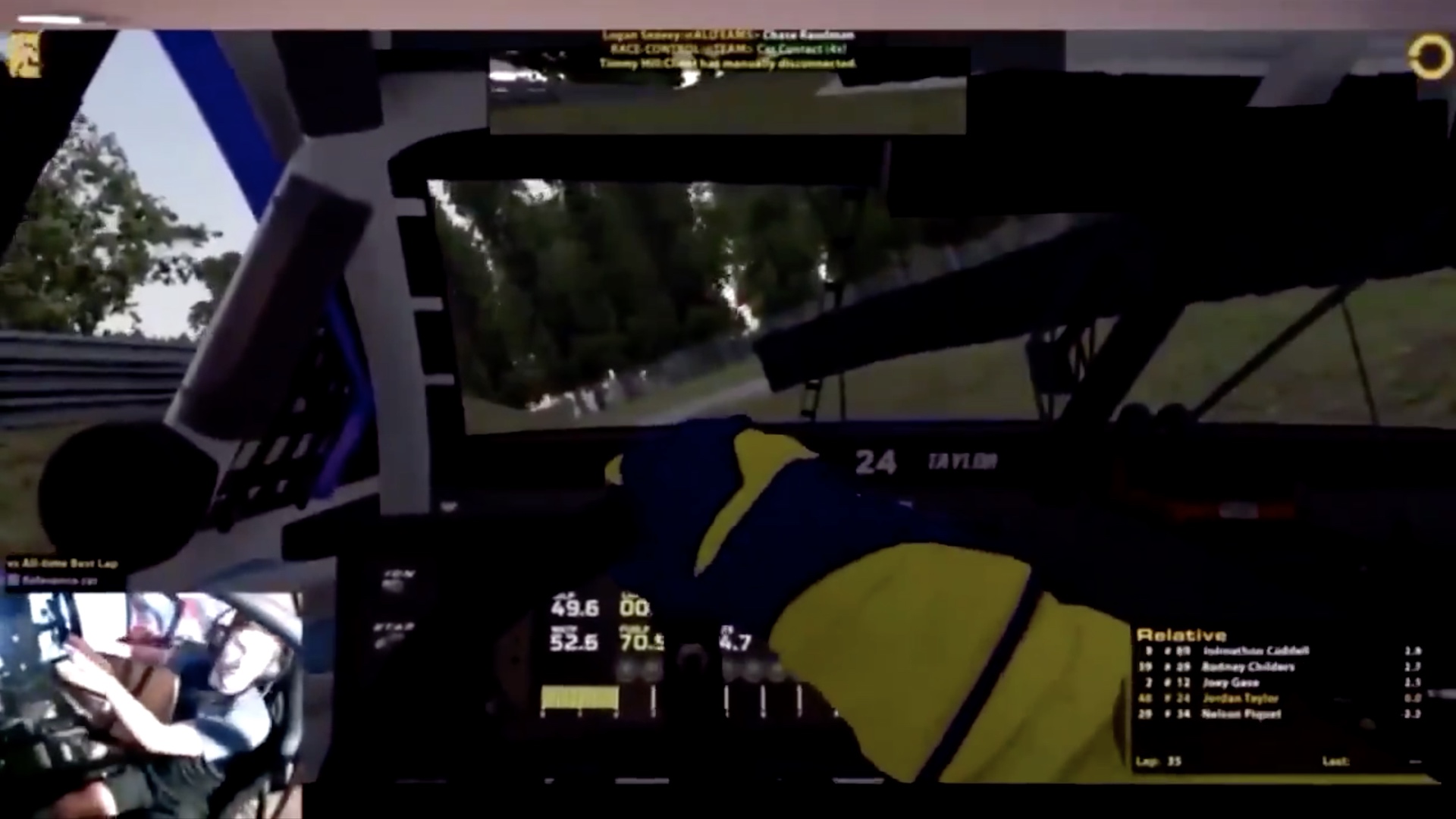

With real racing impossible under shelter-in-place orders, the pros have taken to simulators to stay sharp. These fledgling sim racers are discovering, however, their digital competition is just as cutthroat, the punishment just as painful, and as Corvette Racing driver Jordan Taylor found, the crashes just as jarring.
While competing in this past weekend’s eNASCAR Monza Madness event, Taylor cut to the inside of one of the circuit’s banked corners to allow faster traffic past. Some of this traffic, however, was busy fighting for position, and one of the overtaking cars misjudged the available space on the track, colliding with Taylor as he passed. Both drivers speared into the barriers, and Jordan’s sim rig shook violently to simulate the impact—if anything a little too violently because Taylor found himself on the floor as his setup collapsed.
Taylor later explained on social media that the failure was not caused by the supplier of his full-motion rig, SimCraft, but by a component manufactured by another, unspecified company. He was able to organize prompt replacement of the failed part and tweeted Tuesday evening that he was back up and running, with a lobby open to his fans, many of whom are likely too intimidated by the notion of spending thousands of dollars on expensive setups like Taylor’s, seeing it as a necessity to be competitive.
Yet sim racing fans confident of their racing skills should heed the examples set by NASCAR’s Ross Chastain and retired Formula 1 champion Jacques Villeneuve and simply start racing, no matter how pedestrian their sim setups may seem. As these pros and their bargain-basement rigs have shown, it isn’t what you drive—it’s how you drive it.
Got a tip? Send us a note: tips@thedrive.com
